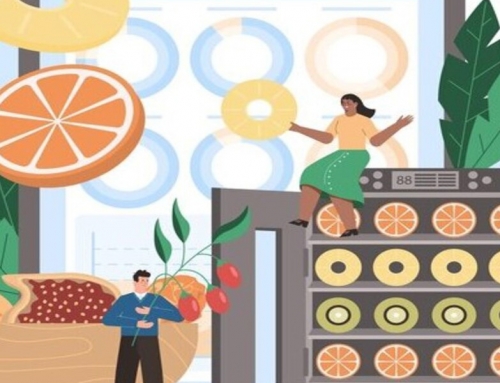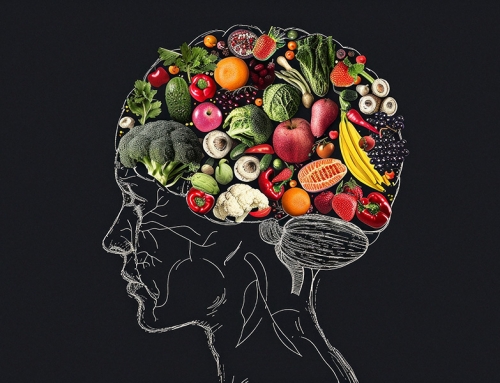Introduction
In order to study the handling, storage, retrieval, and application of information, the multidisciplinary area of informatics incorporates computer science, information science, and other related fields. It entails using technology and tools for data analysis to gather, organise, analyse, and disseminate information across various industries, including healthcare, business, science, and education. The field of informatics is significant since it deals with various information-related activities using both manual and automated technologies for organising knowledge [1]. Depending on the information area, informatics could emerge as a completely novel field. As an example, when informatics and the field of medicine are combined, medical informatics is the result. This is similar to how integration and affiliation between informatics and the food sciences can potentially create an entirely new area called food informatics [1].
What is Food informatics?
“Food Informatics is the collection, preparation, analysis, and smart use of data from agriculture, the food supply chain, food processing, retail, and smart (consumer) health for knowledge extraction to conduct an intelligent analysis and reveal optimizations to be applied to food production, food consumption, for food security, and the end of life of food products.” [2]
Food safety, food labelling, food composition, food processing, and food supply chain management are just a few of the many areas that fall under the broad category of food informatics. It also includes topics like food regulation, reducing food waste, and sustainable food practices.
The primary objective of Food Informatics:
- Information gathering and selection in the area of food and nutrition science, or just general information on nutrition [1].
- It is necessary for the distribution and delivery of nutritional advantages as well as the accessibility of food processing technology [1].
- Another crucial role of a food information system is generating and creating a repository of knowledge on nutrition and health based on user needs [1].
- Developing food information systems supported by food informatics tools is another crucial issue based on customer demand and expectations [1].
Benefits of nutrition and food informatics in the food and beverage industry
- Enhanced food safety: Food traceability systems, which enable the tracking of food from manufacturing to consumption, can be developed using nutrition and food informatics. Swiftly and effectively recognising and containing foodborne illnesses helps to increase food safety.
- Customised diet: Based on a person’s individual dietary preferences and health requirements, nutrition and food informatics can be utilised to create a personalised nutrition plan for them. Mobile apps, wearable electronics, and other tools can be used to do this [3].
- Optimised manufacturing processes: Nutrition and food informatics can assist food firms in creating new goods that cater to consumers’ shifting requirements and tastes through the use of data analytics and other tools. This may involve creating goods that are more hygienic, environmentally friendly, or practical.
- Efficient administration of supply chains: Nutrition and food informatics can be used to track and analyse information about the food supply chain, such as quantities of stock, manufacturing timelines, and transit routes. Pointing up inefficiencies and potential development areas helps improve supply chain management.
- Young academicians (including teachers, students, and researchers) working in the fields of food science, nutrition science, agriculture, horticulture, and other related sciences can benefit from nutrition and food informatics [1]
- In the field of agriculture: Nutrition and food informatics can be beneficial in the field of agriculture, demand and supply chain according to present field circumstances (soil nutrients, plant health), environmental considerations (droughts, long winters), and the input industries (fertilisers, herbicides, pesticides) can be an evaluated and analysed [2].
- Regulation compliance: By monitoring and recording food production processes and ingredient data, nutrition and food informatics can be utilised to guarantee adherence to food regulations.
- Efficiency benefits: Food production and distribution can be improved to minimise waste and generate efficiency through nutrition and food informatics. For instance, applying data analysis tools to estimate demand for particular items offers far more accurate production management.
- Significant benefits of nutrition informatics in hospitals: Two studies were conducted to demonstrate these potential benefits by replacing the traditional patient paper menu system with a BMOS (nutrition informatics system) in hospitals. Both studies showed similar results, indicating significant improvements in dietary intake, which in turn contributed to improved patient outcomes and reduced length of stay (LOS) in hospitals. The implementation of the BMOS also resulted in increased patient and staff satisfaction. Based on these findings and the understanding that readiness for eHealth has been shown to reduce the risk of failure, further research investment is recommended to determine the readiness of dietitians for eHealth technologies [4]
- Employment Opportunities: Employment opportunities for nutrition informatics graduates with a focus on the food and beverage industry are on the rise. With the increasing use of technology and data in the food sector, there is a growing demand for professionals who can combine their knowledge of nutrition science with informatics expertise. These graduates can explore various career paths within the industry, such as food data analysis, where they can utilize their skills to collect, analyze, and interpret nutritional data to inform product development and marketing strategies. They can also work in food technology companies, helping to develop and implement digital solutions for nutrition tracking, meal planning, and personalized dietary recommendations. Additionally, opportunities exist in food policy and regulatory compliance, where graduates can contribute their expertise in nutrition informatics to shape guidelines and standards for labelling, food safety, and health claims. Overall, nutrition informatics graduates with a focus on the food and beverage industry can play a crucial role in leveraging technology and data to drive innovation, improve health outcomes, and meet the evolving needs of consumers in the dynamic food industry [5].
- Advancement of technologies in the food industry: Innovative technologies have brought significant implications to the fermented food and beverage industries, revolutionizing various aspects of production, quality, and innovation. Advancements in genomics, proteomics, metabolomics, and bioinformatics have allowed researchers to gain a deeper understanding of the microorganisms involved in fermentation processes. By studying their genetic and metabolic profiles, scientists can better control fermentation outcomes and optimize product quality. High-throughput sequencing techniques have played a crucial role in analyzing microbial communities, enabling the identification of desirable microbial strains that contribute to unique flavour profiles and product characteristics. Biotechnological approaches, including genetically modified organisms and enzyme engineering, have further enhanced fermentation efficiency and facilitated the creation of novel and improved products. These innovative technologies have not only improved product consistency but also extended shelf-life, enhanced nutritional value, and sparked new levels of product innovation. The implications of these advancements extend beyond the laboratory, influencing regulatory considerations, consumer acceptance, and market trends in the fermented food and beverage industries. As a result, the integration of these technologies has the potential to drive further advancements and shape the future of fermented products, offering exciting possibilities for both manufacturers and consumers [6].
References
-
- Aithal, S., Paul, P., & Bhuimali, A. (2017). Food Informatics and its Challenges and Opportunities- A Review. ResearchGate.
//www.researchgate.net/publication/320022258_Food_Informatics_and_its_Challenges_and_Opportunities-_A_Review - Krupitzer, C., & Stein, A. S. (2021b). Food Informatics—Review of the Current State-of-the-Art, Revised Definition, and Classification into the Research Landscape. Foods, 10(11), 2889. //doi.org/10.3390/foods10112889
- Chellappa, V. (n.d.). The role of Bioinformatics in personalized nutrition. www.linkedin.com. //www.linkedin.com/pulse/role-bioinformatics-personalized-nutrition-venkatesh-chellappa/
- Maunder, K. L. (n.d.). An examination of nutrition informatics in hospital foodservices and the eHealth readiness of dietitions: Are dietitians ripe for disruption? Research Online. //ro.uow.edu.au/theses1/171/
- Fowler, A. (n.d.). Employment Opportunities For Nutrition Science Graduates With A Focus On The Food And Beverage Industry. ScholarWorks @ Georgia State University. //scholarworks.gsu.edu/nutrition_mastersprojects/20/
- Sahu, L., & Panda, S. (2018). Innovative Technologies and Implications in Fermented Food and Beverage Industries: An Overview. In Springer eBooks (pp. 1–23). //doi.org/10.1007/978-3-319-74820-7_1
- Aithal, S., Paul, P., & Bhuimali, A. (2017). Food Informatics and its Challenges and Opportunities- A Review. ResearchGate.






Leave A Comment